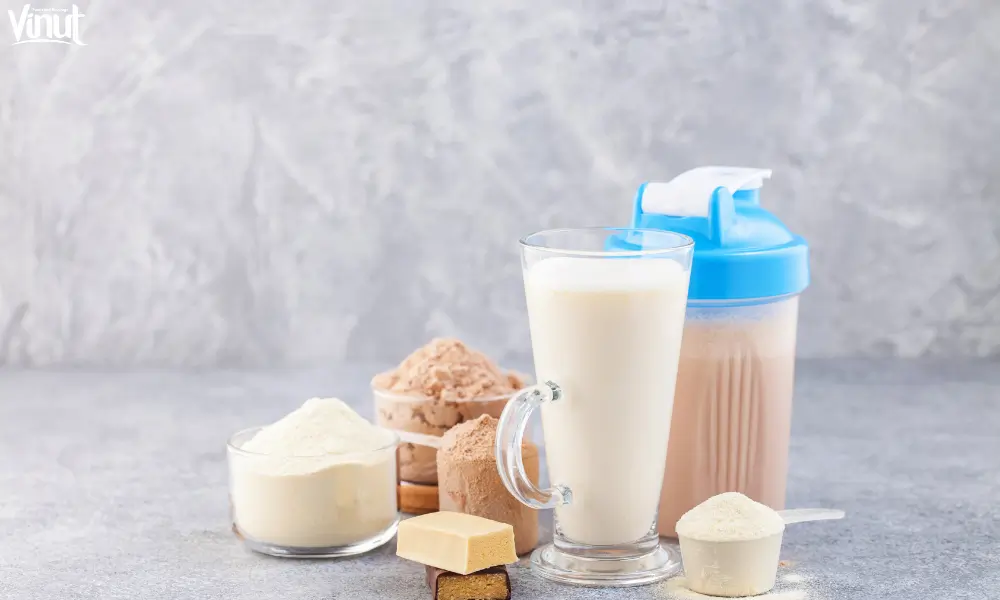Protein shakes aren’t just a staple for bodybuilders and fitness enthusiasts—they’re a versatile dietary addition that can benefit just about anyone. From supporting muscle repair to assisting with weight loss, the benefits of protein shakes are as diverse as the flavors and recipes available.
This article dives into the world of protein shakes, shedding light on their health benefits, debunking common myths, and providing practical advice on how to incorporate them into your daily routine.
What is a Protein Shake?
At its core, a protein shake consists of a protein powder mixed with water, milk, or a milk alternative. The powders are derived from various sources, including whey, casein, soy, or plant-based proteins like pea or hemp. Each type offers different nutritional benefits and digestion rates, making protein shakes a customizable option for post-workout recovery or a meal replacement.

Health Benefits of Protein Shakes
Protein is a critical nutrient in maintaining and repairing tissues, hormones, and enzymes, and in building muscle mass. Regularly consuming it can help:

- Enhance muscle growth and repair, especially after exercise.
- Increase satiety, which helps manage weight by reducing the feeling of hunger.
- Support metabolic rate and fat burning.
When to Consume This Drink?
Timing can play a pivotal role in maximizing a protein shake’s benefits. Drinking a shake before or after a workout can optimize muscle repair and growth. Morning shakes can kickstart your metabolism, while evening shakes can provide overnight nutrients for muscle recovery.

Choosing the Right Protein Powder
Choosing the right protein powder is crucial, depending on your dietary needs and fitness goals. Whey protein is popular for its fast digestion and abundance of amino acids, ideal for post-workout recovery. Casein, on the other hand, digests more slowly, making it suitable for keeping you full longer.
Homemade Protein Shake Recipes
Whether you’re a beginner or a seasoned shake connoisseur, crafting your protein concoction can be both fun and nutritious. Here’s a simple recipe to get you started:
- Chocolate Banana Protein Shake
- 1 scoop of chocolate protein powder
- 1 banana
- 1 cup almond milk
- A handful of spinach (optional)
- Ice cubes
Blend all ingredients until smooth, and enjoy the creamy goodness that’s both nutritious and delicious!
Commercial Protein Shakes and How to Choose Them
When selecting a commercial one, look beyond the marketing and examine the label. Avoid products with excessive sugars and opt for those with a short, understandable ingredient list.
Common Misconceptions
Despite their benefits, some misconceptions persist about this drink. No, they aren’t just for bodybuilders, and they won’t ‘bulk’ you up overnight. They are a convenient source of protein that, when used correctly, can support various health goals.
Protein Shakes for Different Diets
Today, there’s a protein shake for nearly every diet. Vegan options use plant-based proteins, while keto-focused shakes include higher fat content with minimal carbs.
Safety and Side Effects
It’s important to adhere to recommended protein intakes to avoid potential side effects like digestive issues. Most adults can safely consume this drink daily as part of a balanced diet.
Ingredients for Specific Goals
To make the most out of your protein shake, consider what you’re aiming to achieve and select your ingredients accordingly. Here are some ways to customize your shakes:
For Muscle Gain
- Protein Type: Opt for a protein that digests slowly, like casein, which provides a steady stream of amino acids to muscles over several hours.
- Add-Ins: Consider adding Greek yogurt or cottage cheese for extra protein, along with oats or quinoa for sustained energy.
For Weight Loss
- Protein Type: Use proteins like whey isolate that are low in carbohydrates and fats but high in protein, helping to keep the calorie count down.
- Add-Ins: Boost fiber content with chia seeds or flaxseeds to help you feel full longer, and add green vegetables like spinach or kale for low-calorie bulk.
For Enhanced General Health
- Protein Type: Plant-based proteins like peas or hemp can provide additional health benefits and are often easier to digest.
- Add-Ins: Incorporate antioxidants through berries, and add turmeric or ginger for their anti-inflammatory properties.
By understanding the effects of different proteins and add-ins, you can create a protein shake that not only tastes great but also supports your health and fitness goals effectively.
